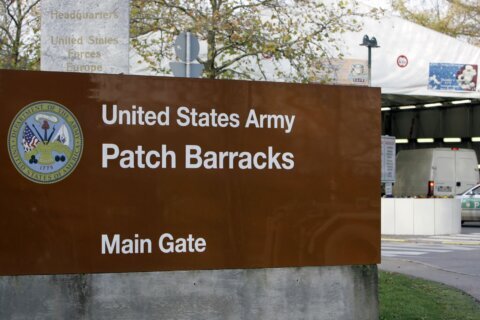
The government of Iran announced Tuesday it has detained several people and set up a special court to look into the downing of Ukraine International Airlines Flight 752 on Jan. 8.
All 176 people on board were killed after the plane was struck by a missile launched by Iranian forces. The Boeing 737-800 was allegedly mistaken for a hostile military aircraft.
The probe is sure to bring up a central question: Did the air crew know that it was dangerous to take off from Iran?
On the same day the flight departed Tehran, the Iraqi military said that 22 ballistic missiles aimed at its military bases had been fired from Iran between 1:45 a.m. and 2:15 a.m. local time — 17 missiles toward Ayn Al-Asad base and five at Erbil.
But after a one-hour flight delay, Flight 752 took off from Iran’s Tehran Imam Khomeini International Airport at 6:12 a.m.
According to flight tracking statistics, 18 other flights also took off after the missiles were launched.
In between Iran’s attack and Flight 752’s takeoff, the U.S. Federal Aviation Administration issued three Notices to Airmen (NOTAMs) warning U.S. air crews not to operate in the overwater airspace above the Persian Gulf and the Gulf of Oman, as well as in Iran and in Iraq, “due to heightened military activities and increased political tensions in the Middle East.”
The notices were transmitted internationally. In a statement, the FAA told WTOP, “The FAA routinely shares relevant information on potential or emerging risks with our industry and foreign partners.”
However, the FAA also said, “We have jurisdiction over U.S. air carriers only. Foreign governments have no obligation to follow our notices.”
The key question many in the aviation community and beyond are wrestling with is: Who made the call to allow the flights, given the inherent danger of flying at that time?
Several sources WTOP spoke to, including former U.S. intelligence officials and airline pilots, pointed out that someone at the Tehran Airport should’ve known it was too dangerous for the flights to take off, and prevented them.
“There had to be some disregard and recklessness on the part of the air crew, the air traffic control crew in Tehran and, certainly, the Iranian military,” said Douglas Wise, a retired CIA senior official.
However, Hal Durbin, a retired U.S. commercial airline pilot, said it’s not clear the Ukrainian air crew and others who took off that morning ever knew about the aviation environment that day. They were very likely sleeping in the early morning hours before their flight, and unaware of Iran’s military activities.
He said they should have been alerted without hesitation to the possible danger.
“I would imagine with what was going on, the airspace should’ve been closed. Whether they (Iran’s aviation authorities) issued a NOTAM or not, I’m not sure. But that the kind of thing you really can’t cover up, because it’s done electrically and posted and there would’ve been a time and date stamp,” he said.
WTOP contacted U.S. and international aviation authorities and searched independently, but did not find evidence that a NOTAM was issued by Iran on that date.
Durbin, who flew passenger planes for 30 years before retiring in 2017, said there’s also another issue to be considered: Even if the crew of Flight 752 had received a NOTAM detailing the danger, “In some cases, it’s hard to see the forest for the trees,” he said.
Flights crews routinely get pre-flight briefings about weather and security issues, but those printed briefings, according to Durbin, “can be long [and] convoluted and the important nuggets may be hidden somewhere in multiple pages of a document. It’s not even certain the crew ever even knew what the circumstances were.”
More specifically, he explained, “From my experience, sometimes these NOTAMs can get out of hand in terms of the amount of information the pilot has to read.”
Durbin said often there are pages and pages of minutiae listed in some NOTAMs. He recalled some particularly notorious ones.
“For example, in New York, I would get pages of NOTAMs, in abbreviated formats, some of which had been posted there for years,” he said.
WTOP asked Ukraine International Airlines whether the crew was ever briefed about the danger.
The airline responded, “Whilst Ukraine International does not wish to encourage any speculations and further overstrain media landscape, the airline does not comment on decisions and activities of the officials and authorities. As for the accident details, the airline cannot comment as well until the investigation is finalized and the findings are officially released.”








